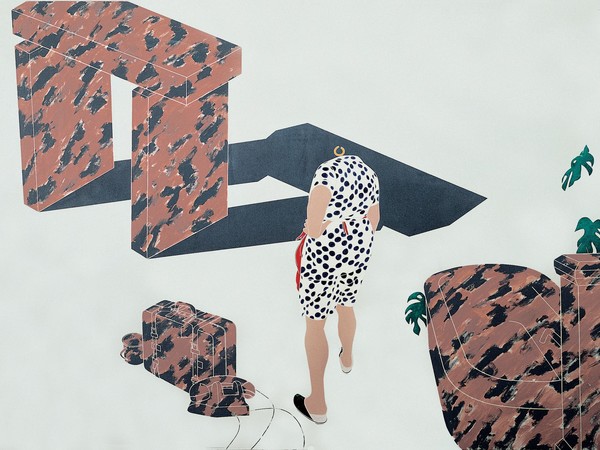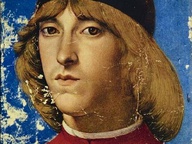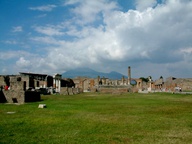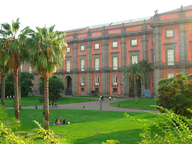Emilio Tadini 1967-1972. Before Our Eyes, Behind Our Gaze

Emilio Tadini, Viaggio in Italia, 1971. Acrilici su tela, 200x300 cm. Collezione privata
From 27 Marzo 2019 to 19 Luglio 2019
Milan
Place: Fondazione Marconi
Address: via Tadino 15
Times: from Tuesday to Saturday from 11am to 7pm
Ticket price: free entrance
Telefono per informazioni: +39 02 29 419 232
E-Mail info: info@fondazionemarconi.org
Official site: http://www.fondazionemarconi.org/
Fondazione Marconi is pleased to announce Emilio Tadini 1967-1972. Before Our Eyes, Behind Our Gaze, its third exhibition dedicated to the Milanese artist and intellectual. This new show follows Emilio Tadini 1960-1985. The Eye of Painting in 2007, and Emilio Tadini 1985-1997. Refugees, Philosophers, the City, the Night in 2012, and will focus on the early years of Tadini’s career from 1967 to 1972, namely from his first cycle The Life of Voltaire up until Archeology.
Emilio Tadini is considered one of the most original personalities of Italy’s post-World War II cultural debate. From the early 1960s he began to evolve an original painting style which he applied to major cycles of surrealist works, populated by a confluence of literary, dreamlike elements and everyday characters and objects, often fragmentary, in which the laws of space, time and gravity are totally suspended.
Tadini’s work stems from an emotional state, from a mental flow “in some semi-dark area of consciousness”, from which images emerge in a Freudian process of relationships and associations, and where the “real” situations he depicts are immersed in an hallucinatory, dreamlike atmosphere presented in a surrealist-metaphysical form. This automatic process develops not only in the first image of each painting but over the entire series: from one image emerge others that modify and alter it.
Each of Tadini’s works tells a story, so that his painting develops in cycles, like a series of serialised novels.
Interpreting his works requires conceptual tools: seemingly simple, straightforward images hide a multiplicity of meanings (“everything happens before our eyes... thought takes refuge ... behind the eyes”), there are references to Surrealism and de Chirico’s Metaphysics, as well as to Lacan and Freud’s psychoanalysis.
With unique ability Tadini controls two kinds of languages, the visual and the literary, the cyclic form of his painting also links it to literature, in particular to writing, which he practised masterfully. His work is therefore a place of convergence for different forms of expression.
Between 1967 and 1972 Tadini’s output was particularly prolific and his working and stylistic method began to achieve definition.
His point of departure was Pop Art: the first two large series of works conceived in that manner were Life of Voltaire (1967) and The Organisation Man (1968). These were followed chronologically by Color & Co. (1969), Closed Circuit (1970), Journey in Italy (1971), Malevič’s Landscape and Archeology (1972).
However Tadini was not interested in the aggressive manifestations typical of American Pop Art but in the more introspective, personal, and at times intellectual, political and critical variants of British Pop Art.
He paid particular attention to the art of Ronald Kitaj, Peter Blake, David Hockney and Allen Jones, but also to that of Francis Bacon, Patrick Caufield, and the figurative narratives of Valerio Adami, Eduardo Arroyo and Hervé Télémaque. This was a transitional phase, however, which Tadini abandoned in the 1980s, but nevertheless it was to leave an indelible mark on his subsequent work.
In addition to paintings, the exhibition will present a selection of drawings and graphic works that demonstrate how Tadini’s “stories in images” invariably involve the use of canvas and paper, painting and drawing.
The final objective of Emilio Tadini 1967-1972. Before Our Eyes, Behind Our Gaze is to “shed light” on the graphic and pictorial work of the Milanese master by reconstructing the complete figure of the artist (painter, illustrator, intellectual, writer and poet) cultured and profound, also in light of his particular relationship with Giorgio Marconi, gallery owner, collector and above all Tadini’s friend.
As Tadini noted: “The meeting with Marconi was important, it gave me great confidence that I could do the work of a painter professionally. And immediately afterwards, through working, the first large series emerged, which became the Life of Voltaire, in which one can see the influence of Metaphysics; the pictorial material becomes lighter, I use pale monochrome backgrounds and the story of my painting in a way begins. By this point it’s now become a professional job, so much so that I suspend my literary work: I take notes for myself as if I wanted to authorise this decision in my own presence.”
(In A.C. Quintavalle, Emilio Tadini, Fabbri Editori, 1994)
Emilio Tadini is considered one of the most original personalities of Italy’s post-World War II cultural debate. From the early 1960s he began to evolve an original painting style which he applied to major cycles of surrealist works, populated by a confluence of literary, dreamlike elements and everyday characters and objects, often fragmentary, in which the laws of space, time and gravity are totally suspended.
Tadini’s work stems from an emotional state, from a mental flow “in some semi-dark area of consciousness”, from which images emerge in a Freudian process of relationships and associations, and where the “real” situations he depicts are immersed in an hallucinatory, dreamlike atmosphere presented in a surrealist-metaphysical form. This automatic process develops not only in the first image of each painting but over the entire series: from one image emerge others that modify and alter it.
Each of Tadini’s works tells a story, so that his painting develops in cycles, like a series of serialised novels.
Interpreting his works requires conceptual tools: seemingly simple, straightforward images hide a multiplicity of meanings (“everything happens before our eyes... thought takes refuge ... behind the eyes”), there are references to Surrealism and de Chirico’s Metaphysics, as well as to Lacan and Freud’s psychoanalysis.
With unique ability Tadini controls two kinds of languages, the visual and the literary, the cyclic form of his painting also links it to literature, in particular to writing, which he practised masterfully. His work is therefore a place of convergence for different forms of expression.
Between 1967 and 1972 Tadini’s output was particularly prolific and his working and stylistic method began to achieve definition.
His point of departure was Pop Art: the first two large series of works conceived in that manner were Life of Voltaire (1967) and The Organisation Man (1968). These were followed chronologically by Color & Co. (1969), Closed Circuit (1970), Journey in Italy (1971), Malevič’s Landscape and Archeology (1972).
However Tadini was not interested in the aggressive manifestations typical of American Pop Art but in the more introspective, personal, and at times intellectual, political and critical variants of British Pop Art.
He paid particular attention to the art of Ronald Kitaj, Peter Blake, David Hockney and Allen Jones, but also to that of Francis Bacon, Patrick Caufield, and the figurative narratives of Valerio Adami, Eduardo Arroyo and Hervé Télémaque. This was a transitional phase, however, which Tadini abandoned in the 1980s, but nevertheless it was to leave an indelible mark on his subsequent work.
In addition to paintings, the exhibition will present a selection of drawings and graphic works that demonstrate how Tadini’s “stories in images” invariably involve the use of canvas and paper, painting and drawing.
The final objective of Emilio Tadini 1967-1972. Before Our Eyes, Behind Our Gaze is to “shed light” on the graphic and pictorial work of the Milanese master by reconstructing the complete figure of the artist (painter, illustrator, intellectual, writer and poet) cultured and profound, also in light of his particular relationship with Giorgio Marconi, gallery owner, collector and above all Tadini’s friend.
As Tadini noted: “The meeting with Marconi was important, it gave me great confidence that I could do the work of a painter professionally. And immediately afterwards, through working, the first large series emerged, which became the Life of Voltaire, in which one can see the influence of Metaphysics; the pictorial material becomes lighter, I use pale monochrome backgrounds and the story of my painting in a way begins. By this point it’s now become a professional job, so much so that I suspend my literary work: I take notes for myself as if I wanted to authorise this decision in my own presence.”
(In A.C. Quintavalle, Emilio Tadini, Fabbri Editori, 1994)
SCARICA IL COMUNICATO IN PDF
COMMENTI

-
 Dal 31 gennaio 2024 al 04 maggio 2025
Fermo | Palazzo dei Priori
Dal 31 gennaio 2024 al 04 maggio 2025
Fermo | Palazzo dei Priori
-
 Dal 20 dicembre 2024 al 04 maggio 2025
Fermo | Palazzo dei Priori
Dal 20 dicembre 2024 al 04 maggio 2025
Fermo | Palazzo dei Priori
-
 Dal 20 dicembre 2024 al 04 maggio 2024
Gorizia | Palazzo Attems Petzenstein
Dal 20 dicembre 2024 al 04 maggio 2024
Gorizia | Palazzo Attems Petzenstein
-
 Dal 18 dicembre 2024 al 18 dicembre 2024
Venezia | Museo Correr
Dal 18 dicembre 2024 al 18 dicembre 2024
Venezia | Museo Correr
-
 Dal 14 dicembre 2024 al 02 marzo 2025
Palermo | Palazzo Abatellis
Dal 14 dicembre 2024 al 02 marzo 2025
Palermo | Palazzo Abatellis
-
 Dal 12 dicembre 2024 al 23 febbraio 2025
Roma | Palazzo Altemps
Dal 12 dicembre 2024 al 23 febbraio 2025
Roma | Palazzo Altemps


